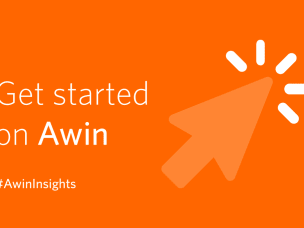Seven essential affiliate program key performance indicators
Written by Samantha Sherer on 8 minute read
As the world of affiliate marketing changes, so should the KPIs you’re focusing on. Assess what’s essential and what you can leave behind.

As the world of affiliate marketing continues to change amidst the coronavirus crisis, now is the perfect time to take a moment to review your affiliate marketing strategy. It’s also the perfect time to start a new one if you haven’t already.
Here we’ll explore the areas you should really be focusing on when either assessing an affiliate program or identifying things to add into a new strategy, including what a key performance indicator is in the field of affiliate marketing, which KPIs you should be monitoring frequently and how to set KPIs properly.
How to measure an affiliate marketing program
Affiliate marketing programs can offer so much data to you, it’s sometimes a little overwhelming. Before beginning a campaign you should think in depth about how you’re going to determine a campaign’s success. These indicators of success are known as KPIs or Key Performance Indicators.
What is a KPI in affiliate marketing?
There are many definitions of a KPI in affiliate marketing and they’re often individual to each business. Some campaigns are focused on brand recognition, others are about that final sales click, some target customers on a wider scale and some are incredibly niche. In each of these instances, the Key Performance Indicators would be different.
Each KPI will tell you how you’re tracking across the course of your campaign and demonstrate if things are successful or not going as planned. Often when it comes to affiliate marketing, KPIs are numerical as opposed to in other forms of marketing where these set goals can be emotive or sentimental in nature.
How to set KPIs for your affiliate program
Drawing from your overall digital marketing strategy, you should assess the individual goals you hope to achieve with each program. Do you want to speak to an untapped overseas market? Test the viability of a completely new product? Build a bigger customer base for a useful service? Whatever the goal, there’s a KPI to run alongside it and you need a system that can properly deliver data on these. The difficulty in affiliate marketing can be knowing what to focus on and what you should probably ignore.
As we see the industry develop and the importance of robust attribution solutions come to the forefront, many marketers are becoming less reliant on just tracking success via Cost Per Click or CPC. While this is still a metric worth watching, considering where an affiliate impacts the purchasing process and rewarding this is worthwhile.
As in social media marketing, the focus moved from ‘likes’ to ‘impressions,’ so has the affiliate marketing sphere. You should be considering this in how you structure your commission payment. Awin provides commission flexibility within our platform via our Payment on Influence technology and strategic partnership with SingleView.
Advertisers can choose to pay a fixed commission to publishers who facilitate a click as part of a purchase journey, without necessarily garnering the last click. Rewarding publishers who are part of the research phase of a customer’s buying patterns can be very beneficial for advertisers.
There are, of course, plenty of other goals to be met that can track success.
Key Performance Indicators to look at in 2020
1. Clicks vs number of sales
This is, in essence, your conversion rate. It should go without saying that your affiliate conversion rate is a vital KPI to keep watch over. However, many marketers are closely watching the clicks alone. If you can see a large discrepancy between clicks and number of sales, you should probably take a closer look.
There could be a few things at play here. The audience may not actually be getting the product they thought they were, suggesting that either the publisher is pushing your product to the wrong audience or that the product or service is being marketed incorrectly. On occasion, this kind of discrepancy in numbers could also mean that a publisher could be engaging in illegitimate tactics to boost their numbers, depending on how you have established your commissions.
2. Cost Per Action and Commissions
Calculating your Cost per Action (CPA) is an important affiliate marketing metric to be able to quickly assess if your campaign is running successfully. By looking at the overall CPA you can see which affiliates could be driving that number up or down.
Some programs choose to use Click Through Rate (CTR) or Cost per Click (CPC). All are very valid metrics, it just depends on which part of the process you’re hoping to see the most impact.
It pays to look holistically at how a publisher is influencing your campaign. While the final click to make a sale is important for an advertiser, seeing where certain affiliates are adding value to the overall awareness of your brand can be of benefit in the long run. Though these publishers’ actions may not result in an immediate sale, their influence can make a great impact on future sales.
Regularly comparing your CPA to the commission you’re paying each publisher will help you determine the ongoing profitability of your program and highlight where tweaks could be made.
3. Segmenting your affiliates
Different types of affiliates can impact different stages of your end client’s buying process. Categorizing your publishers by how they’re making sales or the type(s) of content they are creating can help you understand which area works best for you and your business. It may be video content, coupon sites, direct email marketing, social media posts or any other style, but chances are you’ll be able to see a pattern somewhere. Segmenting can give you a more accurate picture of where you’re finding success.
Awin can also offer some further assistance in this space due to its cross-device tracking technology. Users are no longer executing their full purchase experience through one device. In fact, over 65% of purchase journeys are reported to be carried out across multiple devices. It makes sense to be able to reward publishers for multi-device journey transactions.
4. AOV
Also known as Average Order Value or Basket Value, this is a great metric that goes just beyond how many final clicks a publisher garners. Though a particular affiliate may not create a large volume of final sales, they could still be incredibly valuable to your program if their AOV is high. Their audience might be smaller and niche but extremely dedicated and willing to buy more in one transaction. With certain affiliate networks, such as Awin, you can choose to pay a commission on basket value as opposed to the amount of sales.
5. Reversed sales rate
Sometimes known as your chargeback rate, this is your gross sales vs net sales. While a publisher might be creating a large number of sales in the first instance, this assesses the quality of the customers. If an affiliate’s reversed sales rate is high they may be incorrectly representing your product to their audience. This dampens both their brand and yours. On average, a consistent rate higher than 10% should be cause for concern.
6. Percentage of new customers
While return customers are excellent because they indicate a growing loyalty to your brand, product or service, a successful affiliate program should be continuously drawing in new customers. Without this growth, your money isn’t being well spent. Within the Awin platform, you can easily assess whether a customer is new or returning.
7. Growth year on year
Hopefully, affiliate marketing is part of your long-term marketing strategy. Over time it’s beneficial to assess your year on year growth with the program to identify areas for improvement. In this process, you could also identify your top 10 performing publishers and consider why they’re doing so well.
You can then also take a look at those who aren’t as successful and reach out to offer them further assistance if they need it. If an affiliate has been inactive for some time - whether this means not generating clicks or sales is up to you - you can look to provide some guidance for them or remove them from your program.
Innovation in affiliate marketing
At Awin we look towards innovation in affiliate marketing. As such, we have a focus on tracking solutions that work with any browser - particularly our innovative Bounceless Tracking technology and Tracking Optimization Plugin - and, as previously mentioned, track users across multiple devices (Cross-Device Tracking).
In a constantly developing digital world, we need the ability to track cross device. Advertisers need a true understanding of how the performance channel drives customers, where previously anybody interacting with the channel across more than one device was instantly lost.
How to determine success in affiliate marketing
In affiliate marketing, just as in life, success looks different for everyone. It’s key to build a program that suits your own needs, not those of others. Being clear on how you’ll determine success will lead to a better path to achieving those goals and the best opportunity to make changes where needed.



